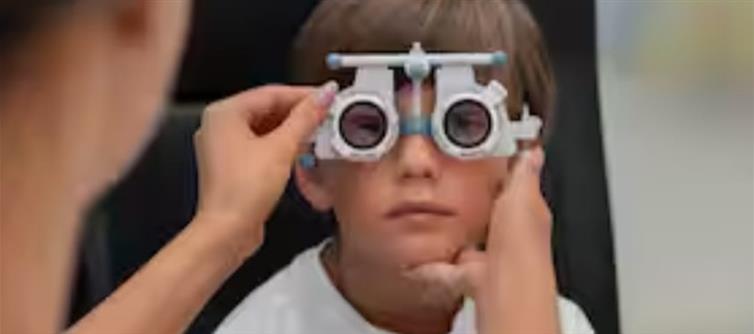
Paediatric eye care is vital in preventing vision loss. Around 80% of childhood blindness is avoidable if diagnosed early. Common eye problems can be classified by age groups:
👶 Eye Problems in Infants (0–1 year)
Congenital Nasolacrimal Duct Obstruction (CNLDO): A Blocked tear duct causing excessive tearing.
Congenital Glaucoma: Sensitivity to light, watery eyes, enlarged “bull’s eye” look (buphthalmos).
Congenital Cataract & Nystagmus: Poor eye tracking after 3 months, white reflex, or fluttering eyes.
Inherited Retinal Dystrophies: Can be managed with advanced visual aids if detected early.
Retinopathy of Prematurity (ROP): Abnormal blood vessel growth in the retina of premature/low-birth-weight babies.
🧒 Common Eye Problems in Preschoolers (2–5 years)
Refractive Errors: Hyperopia (farsightedness), myopia (nearsightedness), astigmatism. Often detected during school screenings.
Strabismus: Crossed or deviating eyes (esotropia/exotropia).
Amblyopia (Lazy Eye): Reduced vision in one eye, not corrected by glasses alone.
Cortical Visual Impairment (CVI): Brain-related visual disorder; may show delayed development.
🧑🏫 Eye Conditions in school Kids (6–10 years)
Asthenopia (Eye Strain): Headache, discomfort due to uncorrected refractive error or convergence insufficiency.
Vernal Keratoconjunctivitis (VKC): Allergic eye condition with itching, tearing, blurry vision, and discharge.
Digital Eye Strain: From prolonged screen use, leading to dry eyes and reduced blink rate.
🩺 Management and Care
CNLDO: Probing and sac massage.
Refractive Errors & Amblyopia: Corrective glasses and patching therapy.
Cataract & Strabismus: Surgical treatment.
Allergies/Infections (VKC): Steroid, antibiotic, or antiallergic drops.
Early Detection: Essential for preventing avoidable blindness and ensuring healthy visual development.




 click and follow Indiaherald WhatsApp channel
click and follow Indiaherald WhatsApp channel